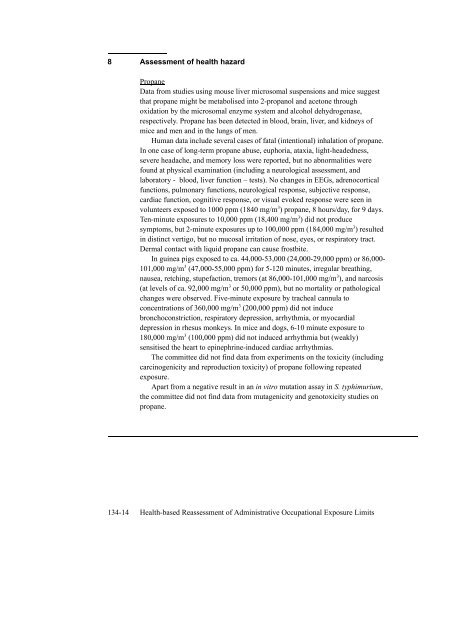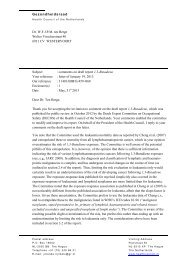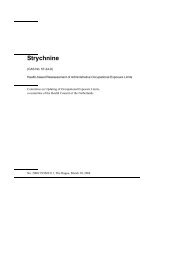Liquefied petroleum gas (LPG) - Gezondheidsraad
Liquefied petroleum gas (LPG) - Gezondheidsraad
Liquefied petroleum gas (LPG) - Gezondheidsraad
You also want an ePaper? Increase the reach of your titles
YUMPU automatically turns print PDFs into web optimized ePapers that Google loves.
8 Assessment of health hazard<br />
Propane<br />
Data from studies using mouse liver microsomal suspensions and mice suggest<br />
that propane might be metabolised into 2-propanol and acetone through<br />
oxidation by the microsomal enzyme system and alcohol dehydrogenase,<br />
respectively. Propane has been detected in blood, brain, liver, and kidneys of<br />
mice and men and in the lungs of men.<br />
Human data include several cases of fatal (intentional) inhalation of propane.<br />
In one case of long-term propane abuse, euphoria, ataxia, light-headedness,<br />
severe headache, and memory loss were reported, but no abnormalities were<br />
found at physical examination (including a neurological assessment, and<br />
laboratory - blood, liver function – tests). No changes in EEGs, adrenocortical<br />
functions, pulmonary functions, neurological response, subjective response,<br />
cardiac function, cognitive response, or visual evoked response were seen in<br />
volunteers exposed to 1000 ppm (1840 mg/m 3 ) propane, 8 hours/day, for 9 days.<br />
Ten-minute exposures to 10,000 ppm (18,400 mg/m 3 ) did not produce<br />
symptoms, but 2-minute exposures up to 100,000 ppm (184,000 mg/m 3 ) resulted<br />
in distinct vertigo, but no mucosal irritation of nose, eyes, or respiratory tract.<br />
Dermal contact with liquid propane can cause frostbite.<br />
In guinea pigs exposed to ca. 44,000-53,000 (24,000-29,000 ppm) or 86,000-<br />
101,000 mg/m 3 (47,000-55,000 ppm) for 5-120 minutes, irregular breathing,<br />
nausea, retching, stupefaction, tremors (at 86,000-101,000 mg/m 3 ), and narcosis<br />
(at levels of ca. 92,000 mg/m 3 or 50,000 ppm), but no mortality or pathological<br />
changes were observed. Five-minute exposure by tracheal cannula to<br />
concentrations of 360,000 mg/m 3 (200,000 ppm) did not induce<br />
bronchoconstriction, respiratory depression, arrhythmia, or myocardial<br />
depression in rhesus monkeys. In mice and dogs, 6-10 minute exposure to<br />
180,000 mg/m 3 (100,000 ppm) did not induced arrhythmia but (weakly)<br />
sensitised the heart to epinephrine-induced cardiac arrhythmias.<br />
The committee did not find data from experiments on the toxicity (including<br />
carcinogenicity and reproduction toxicity) of propane following repeated<br />
exposure.<br />
Apart from a negative result in an in vitro mutation assay in S. typhimurium,<br />
the committee did not find data from mutagenicity and genotoxicity studies on<br />
propane.<br />
134-14 Health-based Reassessment of Administrative Occupational Exposure Limits
















